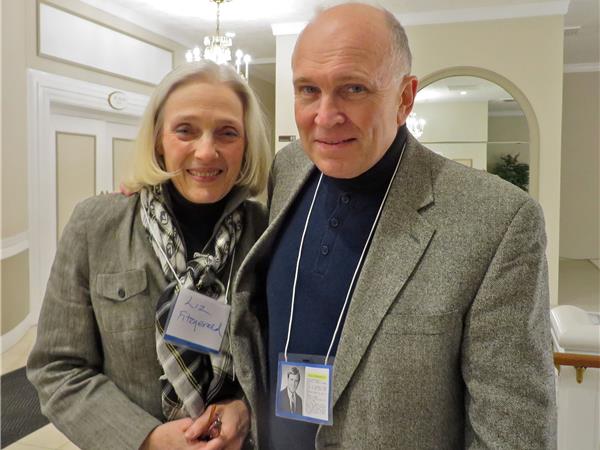And so in this is to be found a profound difference between the Afghan and Indian concept of nonviolence and perhaps the key to their success or failure as peace movements. According to Bala, Khan is generally placed in the shadow of Gandhi, often referred to as his pupil or even more patronizingly as the Frontier Gandhi. They were good friends, shared similar views on civil disobedience, spent significant time working together and held each other in high regard. But, in terms of serving as a movement whose ideals for peace could be made universal, it would seem that it was Gandhi's appeal to the West's upper class elites that won him success even though Badsher Khan would have served as a more realistic, grassroots hero for a world in dire need of workable community-based formulas for peace.
Yet largely because of Gandhi, Badsher Khan's movement remains viewed as just a poor provincial attempt at replicating his ideology and not a genuine indigenous movement of its own with its own characteristics. During his visits to the service and training camps of the Khudai- Khidmatgar, Gandhi insisted on incorporating his personal ideas such as vegetarianism, fasting, and hand spinning (Khadi) into their social reform activities in order to instill what he believed was a "true" sense of nonviolence in the soldiers of the Khudai-Khidmatgar. But for Gandhi to make his specific personal religious preferences a gauge for the purity of Pashtun nonviolence, he risked removing his philosophy from the realm of a cultural movement and placing it firmly into the realm of a personality cult.
According to Bala, references in Khan's biography indicate that such missionary attempts at making Pashtun practices palatable to liberal upper caste Hindu sensibilities were often met with mild derision. One Khudai-Khidmatgar leader remarked that he had no objections to eating vegetarian food in Gandhi's ashrams, but wished the Gandhians would not be so fussy when they came to the Frontier Province themselves.
But yet, the sense of Gandhi's moral superiority was no laughing matter when it came to the plight of the Pashtuns under British rule. In an October 1938 speech to Khudai-Khidmatgar rank and file members Gandhi announced openly that the Pashtun's commitment to peace was incomplete. He then proceeded to refer to the idea that Pashtuns - who held life so cheap and would have killed a human being with no more thought than they would kill a sheep or a hen, could at the bidding of one man lay down their arms and accept nonviolence - AS A FAIRY TALE.
Gandhi made his apartness from the common Afghan man and woman, landed or landless a hallmark of his speeches. Reading them today betrays a racist sensibility and a disregard and prejudice for the detail, history and context of Pashtun life that has been systematically carried forward into numerous current high minded but failed social experiments.
Gandhi's disrespect for the elaborate system of Pashtun tribal rules known as Pashtunwali is troublesome. More troublesome still is that multiple generations of historians and journalists have looked to Gandhi's Pashtun stereotype as the end all and be all to the history of the Khudai-Khidmatgar. Badsher Khan understood more than anyone the need to disassemble and delegitimize the acceptance of violence within the context of Afghan society as a prerequisite for creating an authentic peace movement. It is that model inspired by Badsher Kahn that should comprise the next stage of a global movement that removes the impetus from the elite and places it in the hands of the people. And only by doing that can a genuine peace movement move forward.
-Chapter 5: How JFK's Plan for World Peace came to be
Next Page 1 | 2 | 3 | 4 | 5 | 6 | 7 | 8 | 9 | 10 | 11 | 12 | 13 | 14 | 15 | 16 | 17 | 18 | 19 | 20 | 21 | 22 | 23 | 24 | 25 | 26 | 27 | 28 | 29 | 30 | 31 | 32 | 33 | 34 | 35 | 36 | 37 | 38
(Note: You can view every article as one long page if you sign up as an Advocate Member, or higher).





